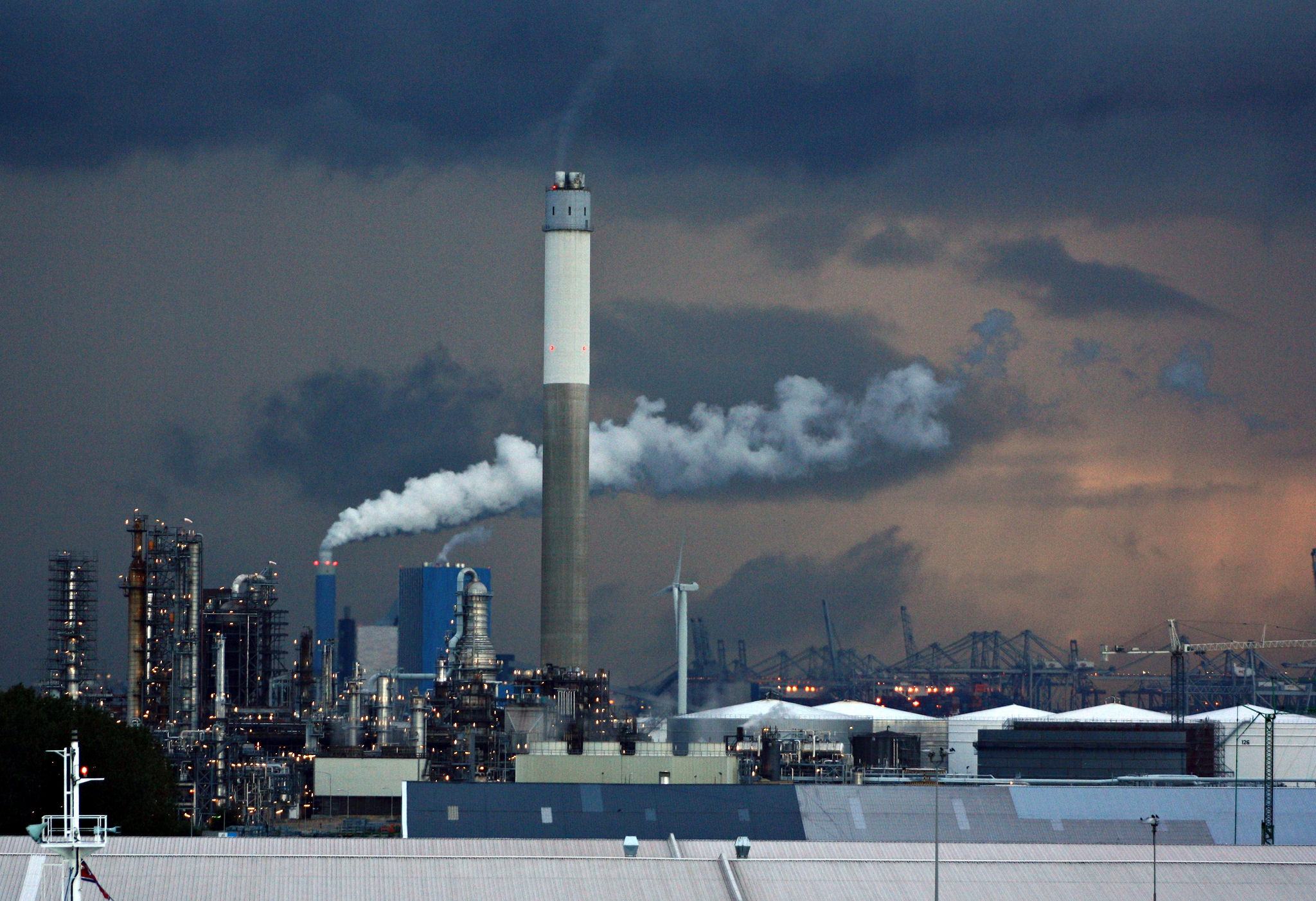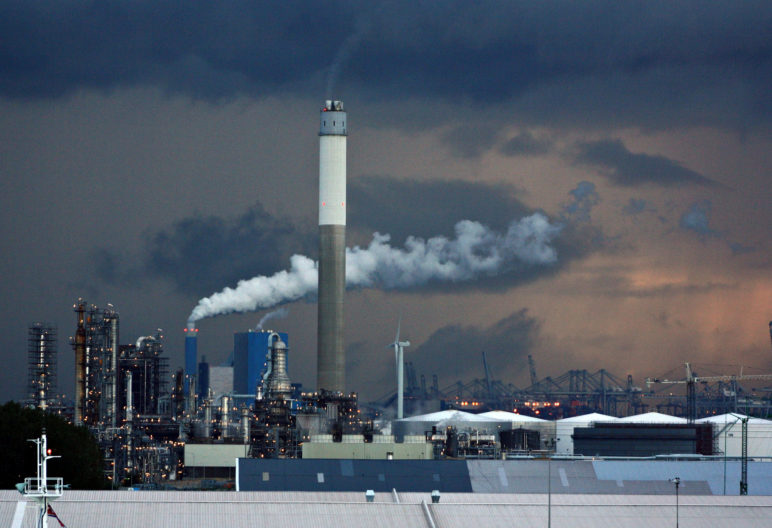The small Columbia River town of Kalama, Washington is home to one of the most hotly-contested energy projects in the Northwest. A Chinese government-backed company aims to build an outsized petrochemical refinery there that would process large quantities of natural gas into liquid methanol for export to China. Since its initial proposal, a welter of competing claims about the project’s environmental impacts has mystified the public and policymakers alike.
Despite relying on enormous volumes of fracked gas to operate the facility, the proponents have repeatedly claimed the project would be a boon to the climate. Sightline has examined these claims before and found them wanting, but don’t take our word for it. An important February 2018 research paper by Stockholm Environment Institute (SEI) delves deeper into the science and economics behind the project backers’ advertising.
What did SEI find? That there are at least three strong reasons to believe that the Kalama methanol project would be a climate disaster.
1. Just supplying the gas would substantially increase carbon emissions.
The proposed facility is a resource hog of the highest order. In addition to prolific demands for water and grid electricity, operations at the site would demand a staggering 320 million cubic feet of fracked gas daily—more than every power plant in Washington combined. The state’s environmental impact statement concluded that the Kalama plant would have the same climate impact as adding 260,000 cars to the roads, increasing the state’s carbon footprint by 1.28 percent at a stroke. And even then, this figure is almost certainly a wild underestimate.
In fact, a state agency subsequently sent that assessment back to the drawing board for failing to consider the added “upstream” climate impacts. Researchers at SEI examined the question and concluded that simply extracting and transporting the volumes of gas required would annually produce 2.6 million to 4 million tons of carbon-dioxide-equivalent (CO2e) owing to methane leaks along the supply chain. Those estimates are based on calculating methane emissions over a 100-year time frame and assuming leakage rates of three percent or lower. (For a sense of perspective, the entire state of Washington emits about 94.4 million tons of CO2e annually from every activity combined.)
Although not all of the leakage would occur in Washington, the impacts may be much worse. Assessing the project on a 20-year basis would increase the estimate to 3.7 million to 7 million tons of CO2e annually because methane is a very potent greenhouse gas that degrades in the atmosphere more quickly than carbon dioxide. If more than three percent of the methane leaks along its journey from extraction well to Kalama, the numbers would be even higher. Then, the onsite operations, ocean transport, and end-use of the methanol, would enlarge the greenhouse gas footprint even more.
2. Gas-to-methanol is a climate-irresponsible way to make plastics.
Billed as a cleaner means of creating methanol, the project’s proponents allege that it will enable Chinese manufacturers to produce olefins, a precursor to plastics manufacturing, with much less pollution than current methods. Yet there is little evidence to support these claims—and what evidence exists suggests that the Kalama proposal is actually dirtier than alternatives. (I wrote about this at some length in a June 2016 article for Sightline.)
SEI dug into the science behind methanol manufacturing and found the same thing: other petroleum feedstocks can create olefins with far fewer greenhouse gas emissions. Using naphtha to make olefins, currently the dominant technology globally, would spare roughly half the emissions as using gas. Using ethane, the second most common method, would also yield substantial carbon savings. It’s true that using a coal-to-methanol route would be even worse, but it’s clear that gas-to-methanol is far from the cleanest alternative.
The project backers have another turn to the argument, though. They allege that Kalama’s gas-derived methanol will help push the truly nasty coal-to-methanol production facilities out of the market, yet SEI found little evidence to support this claim. To the contrary, the economic evidence suggests that introducing large volumes of cheap North American methanol from gas would likely push out cleaner methods of olefin production—precisely the opposite effect the project backers advertise.
3. Using methanol in fuel tanks would increase carbon emissions and delay EVs.
Increasingly, the project backers acknowledge that Kalama methanol would wind up in Chinese fuel tanks, not in plastics. An April 2017 China Daily article quotes We Lebin, the chairman of the project’s parent company, saying that the plant’s output could “replace diesel, coal and gas with methanol to power vehicles.” And Lebin doubled down on the claims in a December 2017 Reuters article, saying that, “[the company] also wants to drive use of methanol as a transportation fuel for cars and ships.”
Yet using methanol as a vehicle fuel (or blending it into conventional vehicle fuel) would increase greenhouse gas emissions further. SEI finds that a typical gas and methanol blend would increase lifecycle carbon emissions by 15 to 19 percent above conventional gasoline when calculated over a 100-year period (and 27 to 37 percent higher on a 20-year time horizon).
Plus, rather than simply displacing coal-derived methanol for use in cars and trucks, as some suggest, a surge in gas-derived methanol would increase liquid fuel supplies, push down prices, and lead to increased consumption.
All that would lead to an estimated increase in emissions of up to 60 percent, in part because feeding China’s appetite for methanol would likely serve to displace and delay the uptake of cleaner electric vehicles.
The future of fracked gas in the Northwest
What happens in Kalama could well have consequences of a scale far larger than a community of its size. The methanol facility proposed there could become the single largest source of climate-warming emissions in Washington, and perhaps Cascadia, even as it would dwarf all other uses of fracked gas in the region. The material it produces would move energy markets in Asia, shaping the way that our plastic products are made and changing the way China powers its growing fleet of vehicles.
With all that at stake, Washington’s policymakers would be wise to carefully absorb the best evidence about the project’s true impact. The more about the science and economics underpinning the project we know, the less it seems compatible with the state’s aims at climate leadership—and the more it seems like a climate disaster in the making.
Thanks to Michael Lazarus at Stockholm Environment Institute who reviewed a draft of this article. Any errors are Sightline’s alone.










Don. P
Just from a scientific perspective, do you know where naphtha and ethane come from? Naphtha is from fossil fuel refining, and ethane is from your so-called evil fracked gas. It’s really interesting that you opposed coal and gas at the beginning but suggested naphtha and ethane as cleaner alternatives.
To be more specific, some naphtha, ethane and the methanol from gas all have a same source – natural gas, so they exactly have same “upstream impacts”. However, it seems that you only consider the upstream impacts when you oppose the methanol project. Very interesting!
Eric de Place
Yes, I’m quite aware of that naphtha and ethane are fossil fuels and I understand how they are derived. The point is that they are much less carbon-intensive routes to making olefins than using fracked gas to make methanol to make olefins. That evidence comes not only from the SEI research paper, but also from petrochemical industry analysis. In other words, it is absolutely not true that “they exactly have same “upstream impacts”.
Anne mullen
You are not alone on this planet and your children’s lives will be damaged by environmental degradation as well. No one will escape needing to breathe . Reverse your desires and decisions.